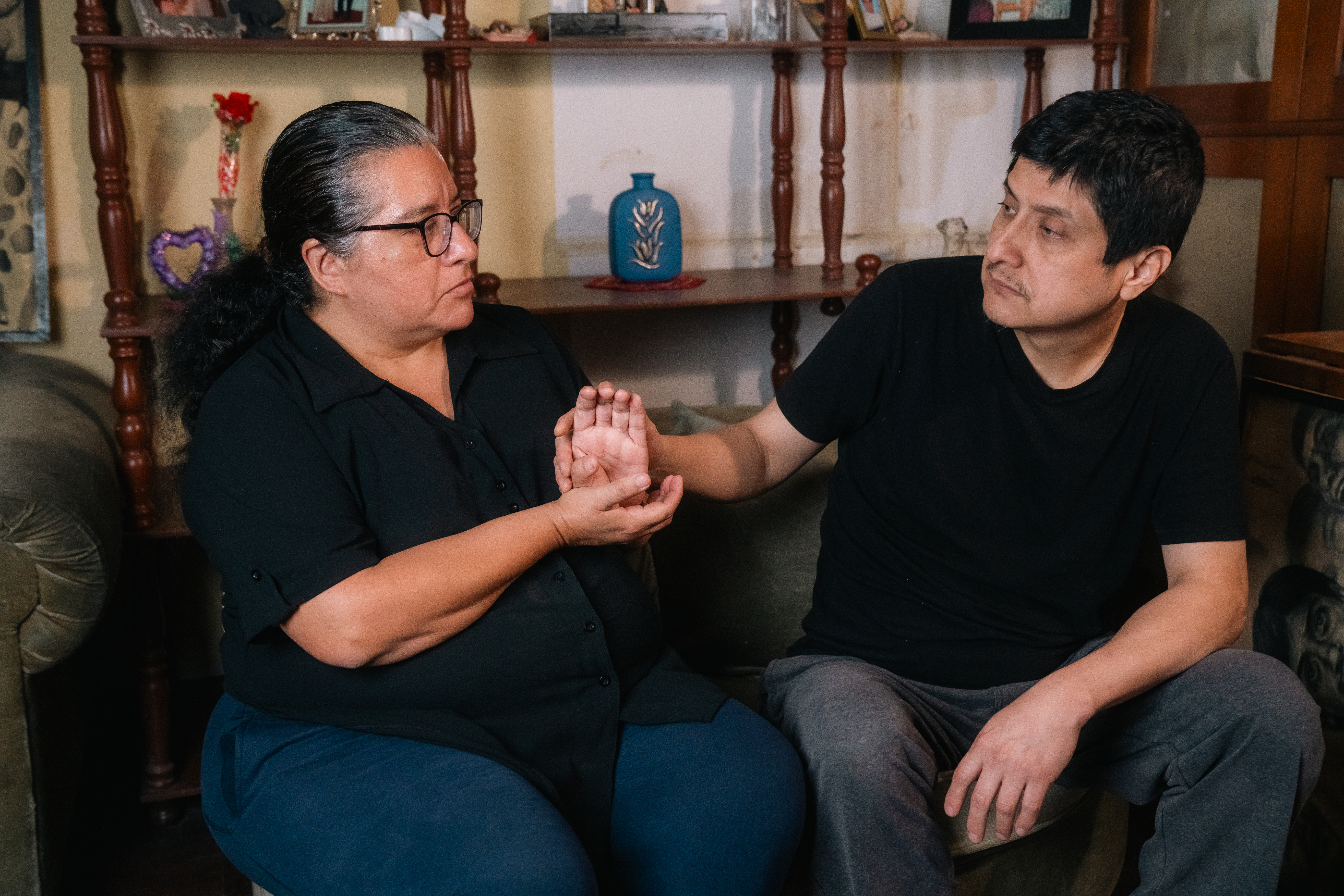Our work in Peru
Sense International is working to ensure that young people with deafblindness in Peru can access an education and learn the skills to start a trade.
In Peru, an estimated 650,000 people live with a mild form of deafblindness and approximately 65,000 people live with a severe form of deafblindness.*
The 2017 national census found that the population living with disabilities in Peru has low levels of education. 14% of people with disabilities have not attained any educational level, and 32% have not studied further than primary level.** For those that have access to education, schools are often poorly prepared to adequately include them, with many teachers feeling untrained to deliver a quality education.
Our work ensures that children with deafblindness are provided with an inclusive, quality education. We are training teachers across 25 regions of the country in skills such as curriculum adaptation and inclusive lesson planning. We are also increasing children’s access to beneficial therapies by equipping schools with the facilities and know-how to deliver sensory stimulation activities.
We are supporting young people with deafblindness to establish their own small business. In recent years, our vocational training work has given young people with deafblindness the chance to learn practical skills in bakery and massage therapy and to receive training in business plan development. With the help of some initial seed funding, many have gone on to set up their own business venture.
We work closely with government ministries and other professionals to improve understanding of deafblindness and multiple disability. This ensures that the needs and rights of people with deafblindness are addressed in decision making and service provision across the country.
 Inclusive Education, Romania
Inclusive Education, Romania
after ten years of campaigning by Sense International Romania, early intervention has been formally embedded in the Romanian
education system.
Find out more about the results of our work in Peru in our annual report:
* Figures based on prevalence estimates produced as part of research by the World Federation of the Deafblind (WFDB). This data may differ from official government statistics. You can read more about deafblindness prevalence data here.
World Federation of the Deafblind (WFDB), 2018 At risk of exclusion from CRPD and SDGs implementation: Inequality and persons with deafblindness.
** Instituto Nacional de Estadística e Informática (INEI), 2018 Perú: Perfil Sociodemográfico Informe Nacional, Censos Nacionales 2017: XII de Población, VII de Vivienda y III de Comunidades Indígenas.

